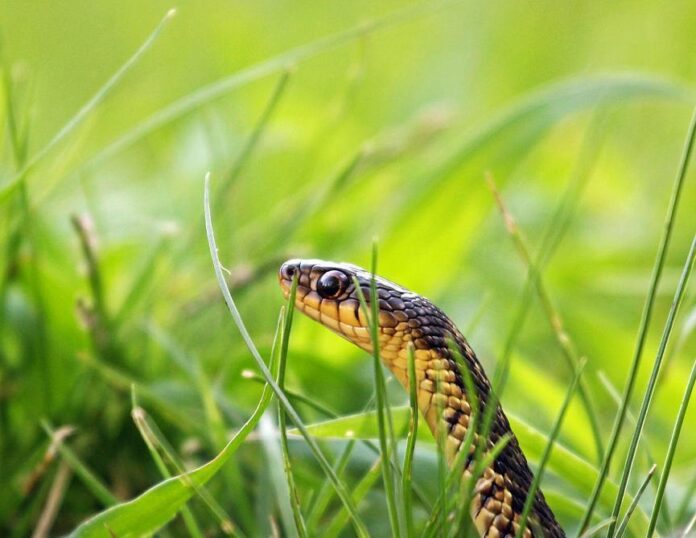During the hot summer, when we pass by tree shades, grassy areas, or streams, the fear of encountering snakes is inevitable. Particularly after floods, the chances of encountering snakes increase. Snakes are feared not only for their terrifying appearance but also for their potent venom. An unfortunate snakebite, if not scientifically managed, can lead to disability or even be life-threatening. So, how can we scientifically prevent and treat snakebites to minimize harm? Let’s understand the scientific prevention and treatment of snakebites!
- The Unbelievable Variety of Snakes
Snakes are a common type of reptile, with over 3,340 species worldwide, more than 660 of which are venomous and nearly 200 are deadly. China has more than 200 snake species, over 60 of which are venomous, and more than 10 are highly toxic, including common ones such as the cobra, golden ring snake, silver ring snake, viper, and bamboo leaf green snake.
- Identifying Venomous Snakes Might Help
a. Judging from the shape: Many venomous snakes have a triangular head, a short and thin tail, and colorful patterns on their bodies, while non-venomous snakes generally have oval heads, more monotonous colors, and long and thin tails. However, as evolution progresses, the appearance of snakes is also subtly changing, and this method of judging from the appearance is no longer absolutely accurate.
b. Judging from the tooth mark shape: The bite marks of a venomous snakebite usually show 1 to 4, generally 2, deep and large tooth marks with a certain distance between them. Non-venomous snakes leave relatively shallow and small tooth marks, numerous and densely spaced, arranged in a sawtooth or arc shape in two rows.
3. Will Poisoning Symptoms Definitely Appear After a Snakebite?
Generally, three scenarios may occur after a snakebite.
a. Bitten by a non-venomous snake: The victim will experience minor pain like a wound, which gradually lessens or disappears after a few minutes. Some victims may experience symptoms like dizziness, nausea, palpitations, and weakness, often caused by anxiety and fear.
b. Bitten by a venomous snake, but the snake didn’t release venom. There’s a 20%-50% chance that snakes don’t release venom when biting, and the victims may show no significant poisoning symptoms or signs.
c. Bitten by a venomous snake, and the snake released venom. Depending on the type of snake, the poisoning symptoms of the victim can vary. According to the type of venom secreted by the snake, we can categorize snakebites into four major types, including neurotoxins, hemotoxins, cytotoxins, and mixed toxins, and victims bitten by different types of venomous snakes will have different symptoms.
4. Can We Suck Out the Venom After a Snakebite?
Following are the common misconceptions about handling snakebites, how many have you believed?
Misconception one: Try to suck out the venom from the bite with the mouth after a snakebite. In fact, many venomous substances have already entered local cell tissues during the bite, and sucking out the venom with the mouth can lead to more severe infections.
Misconception two: Blindly applying traditional herbal medicine. Local application of traditional herbal medicine should be conducted under professional medical guidance. Blindly using traditional medicine not only is unhelpful but may even exacerbate the infection.
Misconception three: Attempting to catch the snake. Trying to catch a snake can result in secondary injuries.
Misconception four: Waiting until symptoms appear after a snakebite before seeking medical treatment. Depending on the type of snake that bit, symptoms can appear at different times, some within minutes, while others can take 1-6 hours. However, regardless of the snake species, medical treatment should be sought as soon as possible.
- Scientifically Dealing with Snakebites Minimizes Harm!
a. Keep calm: Although a snakebite can be frightening, staying calm is critical to handling the situation appropriately.
b. Leave the dangerous environment: Immediately move away from the snakebite site to avoid secondary injuries. If the snake does not let go, use a stick or other tools to make it leave.
c. Remember the snake’s characteristics: If possible, note the features of the snake that bit you. The snake’s appearance, color, size, and shape are critical to doctors determining the correct treatment method.
d. Apply pressure to the bite: Remove any constrictive items like rings, bracelets, watches, tight clothing, shoes, etc., from the injured part to prevent swelling, which can exacerbate local damage.
e. Stay still: Keeping the wound still can slow the spread of the venom. If possible, elevate the injured part, but don’t apply pressure to the blood vessels.
f. Seek medical help: The consequences of a snakebite vary, depending on the bite location, snake venom potency, bite depth, and the speed of receiving treatment. Therefore, you should seek medical help as soon as possible after a snakebite and follow the doctor’s advice.
6. Preventing Snakebites
In fact, the best way to prevent and treat snakebites is to take precautions. In areas where snakes are active, wear long sleeves, long pants, and high-collar clothing to avoid exploring areas where snakes might lurk. If you do encounter a snake, don’t panic, do not disturb it, and never try to catch a snake with bare hands or pick up a seemingly dead snake, as most snakebite victims are bitten while trying to catch or disturb a snake.
Common Knowledge About Snake Activity
Cobras and king cobras like to be active during the day (9:00-15:00), while silver ring snakes are more active at night (18:00-22:00), and vipers are active both day and night. Snakes are ectothermic animals, and when the temperature reaches 18℃, they come out for food, baths, exercise, etc. As the saying goes, “When snakes cross the road, rain is coming.” Therefore, it is especially important to note that snakes often come out of their holes and are active when it’s hot and about to rain, or after a rain. Therefore, avoiding the times and places when snakes are active is the best way to prevent snakebites!
